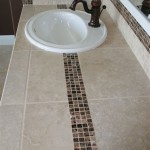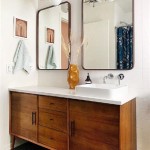What Kind of Paint Is Best For Bathroom Ceilings
Selecting the appropriate paint for a bathroom ceiling transcends mere aesthetics. It demands a careful consideration of the unique environmental challenges inherent in this space, particularly the persistent presence of moisture. Bathrooms are subject to significant humidity fluctuations, rendering ordinary paints prone to peeling, blistering, and the unwelcome growth of mold and mildew. Therefore, the optimal choice necessitates a paint formulation specifically engineered to withstand these adverse conditions, ensuring both long-term durability and a visually pleasing finish.
The primary objective when painting a bathroom ceiling is to create a protective barrier against moisture penetration. This barrier should not only inhibit water absorption but also actively resist the proliferation of microorganisms that thrive in damp environments. Failing to address these factors can result in costly repairs and potential health hazards. Selecting the right paint, therefore, becomes a preventative measure, safeguarding the structural integrity of the ceiling and contributing to a healthier indoor environment.
Furthermore, the paint's finish impacts both its functional performance and its visual appeal. Different sheens offer varying degrees of moisture resistance and cleanability. Some finishes are better suited for concealing imperfections, while others provide a smoother, more reflective surface. Understanding the characteristics of each finish type is crucial in making an informed decision that balances practicality and aesthetic preferences.
Understanding the Challenges of Bathroom Environments
Bathrooms present several environmental challenges that necessitate the use of specialized paint. The most prominent factor is the high humidity level resulting from showers, baths, and even handwashing. This humidity can condense on the ceiling surface, creating a breeding ground for mold and mildew. The constant exposure to moisture weakens the paint film, leading to peeling and blistering over time. Moreover, the porous nature of some ceiling materials can exacerbate the problem by absorbing moisture, further promoting microbial growth.
Beyond humidity, bathrooms are also susceptible to temperature fluctuations. The drastic changes between hot showers and cooler ambient temperatures can cause the ceiling to expand and contract, stressing the paint film and potentially leading to cracking. This thermal cycling, combined with moisture exposure, creates a particularly harsh environment for paint coatings.
Ventilation, or the lack thereof, plays a significant role in the longevity of a bathroom ceiling paint job. Poorly ventilated bathrooms retain moisture for extended periods, increasing the risk of mold and mildew growth. Even with adequate ventilation, the ceiling remains a vulnerable surface due to its proximity to the source of moisture.
Furthermore, bathrooms often experience frequent cleaning. The paint on the ceiling should be able to withstand repeated washing and scrubbing without losing its color or protective properties. This requires a durable and scrubbable finish that can maintain its integrity even after rigorous cleaning.
Types of Paint Suitable for Bathroom Ceilings
Several types of paint are suitable for bathroom ceilings, each offering varying degrees of moisture resistance and other beneficial properties. The most common and effective choices include:
* Acrylic Latex Paint: This is a versatile and widely used option for interior painting. Acrylic latex paints offer excellent adhesion, durability, and water resistance. They are also relatively easy to apply and clean up, making them a practical choice for homeowners. Look for acrylic latex paints specifically formulated for bathrooms, as these often contain mildewcides to inhibit mold and mildew growth. * Epoxy-Based Paint: Epoxy paints are known for their exceptional durability and resistance to chemicals, abrasion, and moisture. They create a hard, non-porous surface that is highly resistant to mold and mildew. While epoxy paints are more expensive and require a more meticulous application process, they offer superior protection in high-moisture environments. * Specialty Bathroom Paint: Some paint manufacturers offer paints specifically designed for bathrooms. These paints typically incorporate advanced mildew-resistant additives and are formulated to withstand high humidity levels. They often come in a variety of sheens, allowing you to choose the best option for your aesthetic preferences. * Oil-Based Paint: While less commonly used in modern residential applications due to higher VOC content and longer drying times, oil-based paints offer excellent moisture resistance. However, they are more difficult to apply and clean up than latex paints and require proper ventilation during application. Their use is generally discouraged in favor of more environmentally friendly alternatives.When selecting a paint type, it is crucial to consider the existing condition of the ceiling. If the ceiling has previously been painted with an oil-based paint, it is recommended to prime the surface with an oil-based primer before applying a latex topcoat. This will ensure proper adhesion and prevent compatibility issues. If the ceiling has existing mold or mildew, it should be thoroughly cleaned and treated with a mold-killing solution before painting.
Choosing the Right Sheen for Optimal Performance
The sheen, or level of gloss, of a paint significantly impacts its performance in a bathroom environment. Different sheens offer varying degrees of moisture resistance, cleanability, and aesthetic appeal. The most suitable sheens for bathroom ceilings include:
* Semi-Gloss: Semi-gloss paint offers excellent moisture resistance and is highly washable, making it an ideal choice for bathroom ceilings. Its slightly reflective surface helps to brighten the space and create a more open feel. However, semi-gloss paint can highlight imperfections on the ceiling, so it is important to ensure that the surface is properly prepared before painting. * Satin: Satin paint provides a good balance between moisture resistance and aesthetic appeal. It is more washable than matte paint but less reflective than semi-gloss. Satin paint is a good option for bathrooms where you want a durable and easy-to-clean finish without excessive shine. * Eggshell: Eggshell paint has a slightly lower sheen than satin, offering a more subtle and muted appearance. It is still relatively washable and provides adequate moisture resistance for most bathroom environments. Eggshell paint is a good choice for bathrooms where you want to minimize glare and create a softer, more inviting atmosphere. * Matte: While matte paint is excellent at concealing imperfections, it is generally not recommended for bathroom ceilings due to its lower moisture resistance and washability. Matte paint is more porous than other sheens, making it more susceptible to water damage and mold growth. If matte paint is used, it should be a high-quality, moisture-resistant formulation specifically designed for bathrooms.The choice of sheen ultimately depends on personal preference and the specific characteristics of the bathroom. If moisture is a significant concern, a semi-gloss or satin finish is recommended. If concealing imperfections is a priority, an eggshell or matte finish may be more suitable, provided that it is a high-quality, moisture-resistant formulation.
In addition to the sheen level, the color of the paint can also impact the overall appearance of the bathroom. Light colors tend to reflect more light, making the space feel larger and brighter. Dark colors can create a more dramatic and intimate atmosphere. When choosing a color, it is important to consider the existing lighting and décor of the bathroom to create a cohesive and visually appealing space.
Proper surface preparation is paramount for achieving a long-lasting and durable paint job on a bathroom ceiling. The ceiling should be thoroughly cleaned to remove any dirt, dust, grease, or mildew. Any existing peeling or flaking paint should be scraped away, and the surface should be sanded smooth. If there are any cracks or holes, they should be filled with patching compound and sanded level. A primer should be applied to the clean, dry surface to promote adhesion and create a uniform base for the paint. Using a high-quality primer specifically designed for bathrooms can further enhance moisture resistance and prevent staining.
Applying multiple thin coats of paint is generally preferable to applying one thick coat. This allows the paint to dry properly and prevents runs and sags. Each coat should be allowed to dry completely before applying the next. Using a high-quality brush or roller will help to ensure a smooth and even finish. Adequate ventilation is essential during and after painting to allow the paint to dry properly and prevent the build-up of harmful fumes.

Best Paint For Bathroom Ceilings

Ceiling Paint For Bathroom Home Painters Toronto

Ceiling Paint For Bathroom Prestige Painting Gta

Ceiling Paint For Bathroom Prestige Painting Gta

25 Beautiful Bathroom Ceiling Ideas

The Best Paint For Bathrooms Solved Bob Vila

Best Type Of Paint For Bathrooms 2024 Guide Forbes Home

Should I Use Flat Paint In A Bathroom Williams Painting

Ceiling Paint For Bathroom Prestige Painting Gta

The Guide To Painting Your Bathroom Ceiling By Mira Showers
Related Posts







